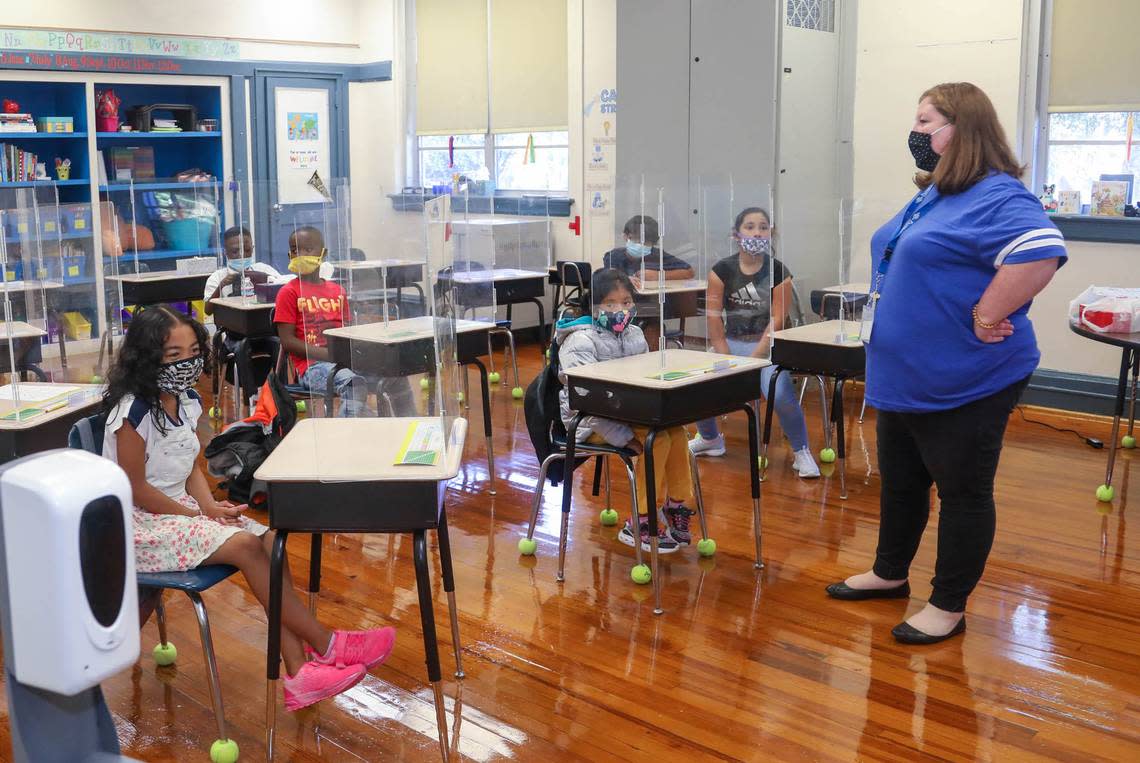Here’s what SC Gov. McMaster said about potential mask mandates, lockdowns amid COVID spike

- Oops!Something went wrong.Please try again later.
Gov. Henry McMaster says lockdowns and mask mandates won’t return to South Carolina, despite a recent statewide surge in COVID hospitalizations.
McMaster vowed Wednesday to block mask mandates, school closures and government lockdowns in response to a rise in COVID infections throughout the state.
In a video posted to the social media platform X, McMaster said lockdowns imposed during the height of the COVID pandemic were a “mistake,” made in reliance on expert sources that were “in error.”
As talks of mask mandates and closures kick up across the country, I can assure the people of South Carolina we will not have mask mandates, we will not close schools, and we will not lock down. pic.twitter.com/GlKgy8AhMi
— Gov. Henry McMaster (@henrymcmaster) September 7, 2023
“I can assure the people of South Carolina that we’re not going to have mandates requiring masks, we’re not going to close down schools, we’re not going to do a lot of the foolish things that were done in other states and were limited to a great degree here in South Carolina,” McMaster said in the video.
On June 24, the Centers for Disease Control and Prevention reported 56 COVID hospitalizations in South Carolina. That number ballooned to 316 on Aug. 26, the most recent available data.
Citing talks of mask mandates and school closures nationally, McMaster emphasized the importance of keeping schools open so “that the young people of South Carolina can get the best education available.” Some schools across the country have already temporarily closed or required masks as hospitalizations from the virus have increased.
But doctors say it’s normal for respiratory infections such as COVID, the flu and RSV to surge during this time of year as students return to school.
“School has started, and kids go back to school sharing all sorts of germs that begin to go around,” said Dr. Anna-Kathryn Burch, division director of pediatric infectious diseases at Prisma Health Children’s Hospital in the Midlands. “It’s a pretty common phenomenon that we see in general, with respiratory viruses.”
Burch said she isn’t on the ground seeing patients everyday like some of her colleagues who practice general pediatrics. But because she’s in constant communication with those general practitioners, she confirmed COVID is on the rise, albeit not as much for children compared to adults.
“Yes, we are seeing increased numbers of COVID that are coming through our general outpatient pediatrics facility,” Burch said. “But from a pediatric standpoint, we really haven’t seen that many hospitalizations due to COVID.”
Lexington Medical Center has 28 hospitalized patients with COVID as of Thursday. In May and June, they were averaging about five patients a month, according to spokeswoman Jennifer Wilson. In August, the average increased to 10 patients.
Prisma Health reported a total of 61 COVID patients across all of its facilities of Sept. 7. That’s 33 more than last month.
Following the height of the pandemic — and changes to reporting requirements and testing methods — the South Carolina Department of Health and Environmental Control discontinued use of its COVID dashboard, which tracked the number of infections and hospitalizations across the state.
“With the increase in at-home testing, the number of tests was the most underreported data point in the state’s weekly update,” said DHEC spokesman Casey White. “We continue to monitor the virus and its effects, as we do for other respiratory viruses such as the flu, as the global health threat from COVID-19 has not been eliminated.”
Dr. Jonathan Knoche, a medical consultant for DHEC’s Immunization and Acute Disease Epidemiology divisions, said COVID infections are increasing, but returning to the level of infections seen in 2020 and 2021 is unlikely.
“I’d be surprised if that happened,” Knoche said, referring to massive lockdowns, mask mandates and a surge in COVID-related deaths. “I think it’s certainly up to individuals to make a decision for themselves and what they want to do to protect themselves and their health, whether that’s getting a vaccine, or wearing face masks, and practicing good hygiene habits.
“But I think we’re seeing COVID circulating the community at generally lower levels with some intermittent peaks or waves of illness that are sometimes related to human activity, like people traveling or returning to school,” Knoche continued. “Those sorts of things contribute to these fluctuations and are not surprising.”

